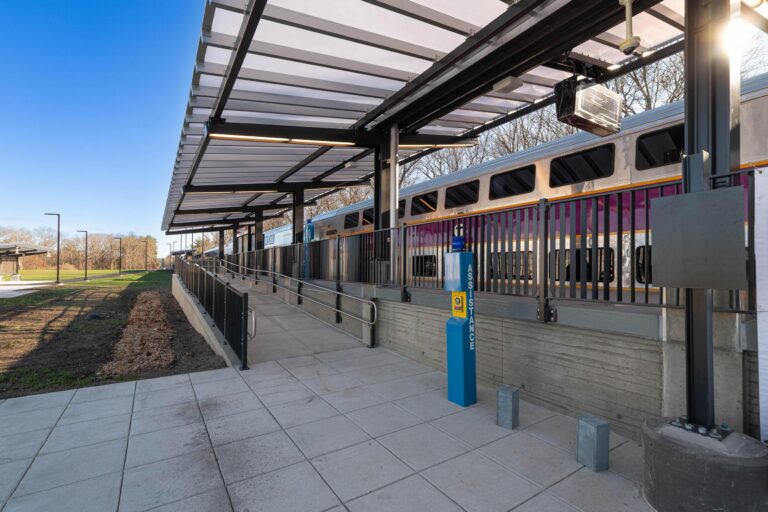Plans for a new South Coast Rail station project have been officially unveiled, marking a meaningful milestone in the region’s transportation development. The proposed station aims to enhance connectivity and provide improved access for commuters traveling along the South Coast corridor.Officials highlight the project’s potential to stimulate economic growth, reduce traffic congestion, and promote sustainable transit options for the community. Further details on the design, timeline, and funding are expected to be announced as the project progresses.
Table of Contents
- Plans Reveal Strategic Location and Key Features of Proposed South Coast Station
- Environmental Impact Assessment Highlights Challenges and Mitigation Strategies
- Community Response Emphasizes Need for Improved Accessibility and Services
- Recommendations Focus on Sustainable Development and Enhanced Connectivity
- To Wrap It Up
Plans Reveal Strategic Location and Key Features of Proposed South Coast Station
The newly unveiled plans spotlight a strategic location for the proposed South Coast Station, positioned to enhance connectivity across the southeastern Massachusetts corridor. Situated in East Taunton, the station serves as a pivotal link on the Fall River/New Bedford Line, designed to provide streamlined access to Boston and surrounding urban centers. This placement not only revitalizes a long-dormant rail corridor but also aims to stimulate economic growth by integrating transit-oriented development surrounding the station.
Key features outlined in the proposal include:
- Modern, accessible platforms designed to accommodate increased passenger volumes.
- Park-and-ride facilities to support commuters traveling from more remote areas.
- Enhanced intermodal connections enabling smooth transfers between rail, bus, and pedestrian pathways.
- Environmentally sustainable design elements, aimed at minimizing the project’s ecological footprint.
These complete amenities signal a forward-thinking approach to passenger convenience and operational efficiency, reflecting years of planning and community collaboration. The station is expected to be a cornerstone of regional transit expansion, providing residents with a reliable alternative to highway travel and reducing congestion on major roadways.
Environmental Impact Assessment Highlights Challenges and Mitigation Strategies
The Environmental Impact Assessment (EIA) conducted for the South Coast Rail Station project reveals a complex array of challenges that must be addressed to ensure sustainable development. Key environmental concerns include potential disruption to local ecosystems, increased noise pollution, and the management of construction-related waste. Moreover,the assessment underscored risks to water quality from runoff and habitat fragmentation for native flora and fauna. These findings highlight the critical need for a rigorous mitigation plan that balances infrastructural progress with environmental preservation.
In response, project planners have outlined innovative mitigation strategies designed to minimize adverse effects while advancing the station’s construction. Notable measures include:
- Advanced erosion control systems to protect water bodies from sedimentation;
- Noise barriers and scheduling adjustments to reduce impact on nearby communities;
- Native vegetation restoration programs to compensate for habitat loss;
- Comprehensive waste management plans that prioritize recycling and landfill reduction;
- Regular environmental monitoring to ensure compliance with sustainability goals and adapt as needed.
These proactive interventions align with best practices in EIA procedures and reflect a commitment to minimizing substantive and procedural risks, ensuring the project progresses with environmental integrity at its core.
Community Response Emphasizes Need for Improved Accessibility and Services
Local residents and advocacy groups have voiced strong support for the new station project but stress that accessibility must take precedence. Many emphasize the importance of features such as step-free access, tactile guidance systems for the visually impaired, and clear signage to ensure the station serves all community members effectively. Comments from stakeholders highlight that improved access would not only benefit individuals with disabilities but also parents with strollers, elderly passengers, and travelers with luggage.
Alongside physical accessibility, the community is calling for enhanced service offerings to accommodate growing demand. Requested improvements include:
- Increased frequency of trains during peak hours
- Extended operating hours for early morning and late-night commuters
- Real-time digital information displays and mobile app integration
- Dedicated spaces for bicycle storage and ride-share connectivity
Residents argue these upgrades are critical to making the station a truly inclusive and efficient transit hub that meets the evolving needs of the South Coast community.
Recommendations Focus on Sustainable Development and Enhanced Connectivity
The South Coast Rail Station project emphasizes the integration of sustainable development principles with advanced connectivity solutions to create a modern transport hub that supports long-term environmental and social goals. Key considerations include reducing carbon emissions through the use of eco-kind building materials and renewable energy sources. Recommendations also highlight the implementation of intelligent connectivity infrastructure, such as 5G-enabled smart systems, to enhance commuter experience and operational efficiency, aligning with global trends towards greener, smarter urban spaces.
- Promote multimodal transport links to decrease reliance on private vehicles and encourage public transit use.
- Incorporate green spaces and climate-resilient design features to boost ecosystem health and community wellbeing.
- Leverage digital infrastructure to facilitate seamless real-time interaction and sustainable business models within the station precinct.
These strategies are critical to positioning the station as a pivotal node that not only connects regions but also drives socioeconomic growth responsibly. By embedding sustainable practices at the core of its design and connectivity framework, the project sets a benchmark in urban transport innovation that balances the demands of economic development with environmental stewardship and social equity, ensuring benefits that extend well beyond its physical footprint.
To Wrap It Up
As plans for the new South Coast Rail Station move forward, community leaders and officials emphasize the project’s potential to enhance regional connectivity and stimulate economic growth. With detailed designs now public and timelines set, all eyes will be on the accomplished execution of this vital infrastructure initiative that promises to reshape transportation along the South Coast for years to come. Updates will continue as the project progresses.

